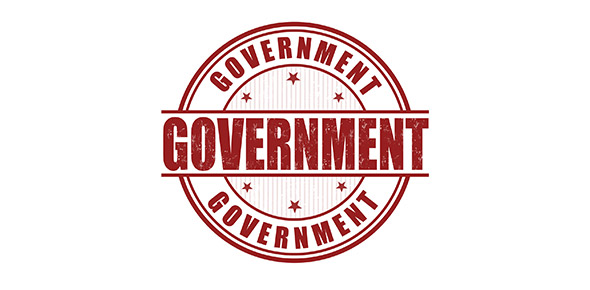The Bureaucracy - Part 1

Questions based on readings from the Bureaucracy chapter 10 packet page 207 to page 211.
- 1.
Which of the following is not an example of governmental bureaucratic agencies?
- A.
Cabinet
- B.
Independent executive agencies
- C.
Budgetary agencies
- D.
Government corporations
- E.
Regulatory agencies
Correct Answer
C. Budgetary agenciesExplanation
Budgetary agencies are not an example of governmental bureaucratic agencies because they are responsible for managing and overseeing the budgetary process, including the preparation, execution, and evaluation of the budget. They do not have the same regulatory or administrative functions as other governmental bureaucratic agencies, such as regulatory agencies or independent executive agencies. Budgetary agencies focus primarily on financial and budgetary matters, rather than implementing and enforcing regulations or providing specific services.Rate this question:
-
- 2.
The primary functions of a bureaucracy includes which of the following?I. distinct division of laborII. control of part-time employmentIII. allocation of responsibilityIV. supervision chainV. autonomous career
- A.
I only
- B.
III only
- C.
I and III only
- D.
II and IV only
- E.
I, IV, and V only
Correct Answer
C. I and III onlyExplanation
The correct answer is I and III only. This is because the primary functions of a bureaucracy include a distinct division of labor, where tasks and responsibilities are divided among different individuals or departments, and the allocation of responsibility, where individuals or departments are assigned specific tasks or areas of responsibility. Control of part-time employment, supervision chain, and autonomous career are not primary functions of a bureaucracy.Rate this question:
-
- 3.
The bureaucracy is accountable to which of the following?I. the mediaII. interest groupsIII. their superiorsIV. branches of government
- A.
III only
- B.
IV only
- C.
I, III, and IV only
- D.
II, III, and IV only
- E.
All of the above
Correct Answer
D. II, III, and IV onlyExplanation
The bureaucracy is accountable to interest groups, their superiors, and branches of government. This means that they are answerable to the organizations and individuals that have a stake or influence in their work, their immediate supervisors or higher-ranking officials, and the different branches of the government that oversee their operations. The media, on the other hand, is not mentioned as being one of the entities to which the bureaucracy is accountable.Rate this question:
-
- 4.
All of the following is true about the regulatory agencies except
- A.
Executive agencies
- B.
Alphabet agencies
- C.
Quasi judicial
- D.
Independent regulatory agencies
- E.
Quasi legislative
Correct Answer
A. Executive agenciesExplanation
The given options are different types of regulatory agencies. An executive agency is a type of regulatory agency that operates under the executive branch of government and is responsible for implementing and enforcing laws and regulations. Alphabet agencies are also a type of regulatory agency, referring to agencies that are known by their initials or acronyms. Quasi-judicial agencies have powers that are similar to those of a court, while independent regulatory agencies operate independently from the executive branch. Quasi-legislative agencies have the authority to create regulations. Therefore, the correct answer is executive agencies, as they are not mentioned in the options.Rate this question:
-
- 5.
According to the German sociologist Max Weber's bureaucratic theory, bureaucracy should be
- A.
Consist of extensive rules in which the hierarchy utilizes patronage
- B.
A hierarchy of authority with specializations and rules based on merit
- C.
A unity and chain of command in which centralization is placed on administrations
- D.
Include line and staff control and span control by trusted sources
- E.
Impersonal in which the selection process is fair
Correct Answer
B. A hierarchy of authority with specializations and rules based on meritExplanation
According to Max Weber's bureaucratic theory, bureaucracy should have a hierarchy of authority with specializations and rules based on merit. This means that individuals should be assigned positions based on their qualifications and expertise, and decisions should be made by those who have the necessary knowledge and skills. This ensures that the organization operates efficiently and effectively, as decisions are made by competent individuals who are best suited for the task at hand. By emphasizing merit-based rules and specialization, Weber believed that bureaucracy could achieve rationality and effectiveness in its operations.Rate this question:
-
- 6.
Which of the following is not a limit placed on federal bureaucracy?
- A.
Review process whether within or in court to appeal agency decision
- B.
Office of Management and Budget and the General Accounting Office
- C.
Congress's legislative intent, congressional oversight, and restrictions on appropriations
- D.
Interest groups, political parties, private sectors, and such media checks
- E.
The Administrative Procedure Act of 1946, defining policy and its agencies as well as their procedures
Correct Answer
D. Interest groups, political parties, private sectors, and such media checksExplanation
The correct answer is interest groups, political parties, private sectors, and such media checks. This answer is not a limit placed on federal bureaucracy because interest groups, political parties, private sectors, and media checks are external factors that can influence or interact with the bureaucracy, but they do not directly impose limits or restrictions on its actions or operations. The other options listed in the question, such as the review process, congressional oversight, and the Administrative Procedure Act, are all examples of limits or constraints on the federal bureaucracy.Rate this question:
-
Quiz Review Timeline +
Our quizzes are rigorously reviewed, monitored and continuously updated by our expert board to maintain accuracy, relevance, and timeliness.
-
Current Version
-
Mar 19, 2023Quiz Edited by
ProProfs Editorial Team -
Apr 06, 2010Quiz Created by
Roland Wang
 Back to top
Back to top


